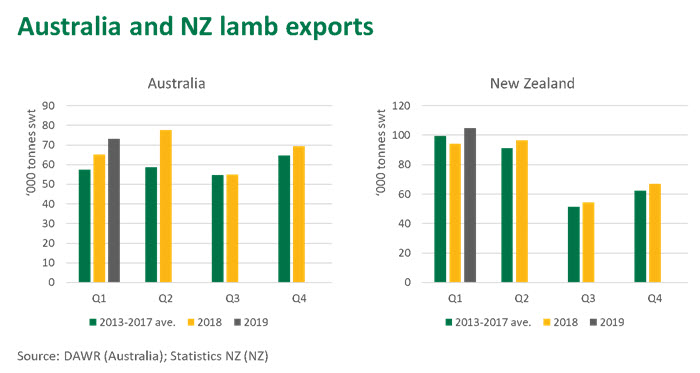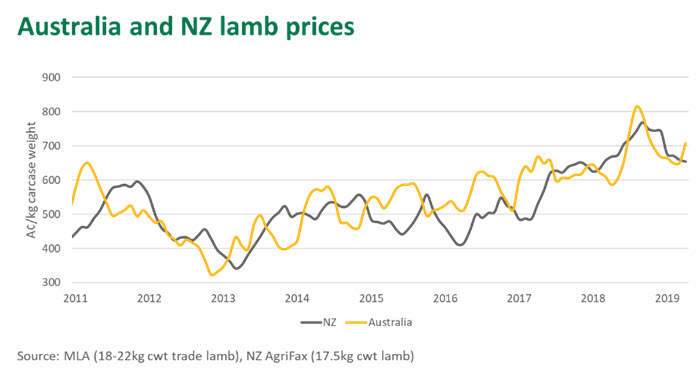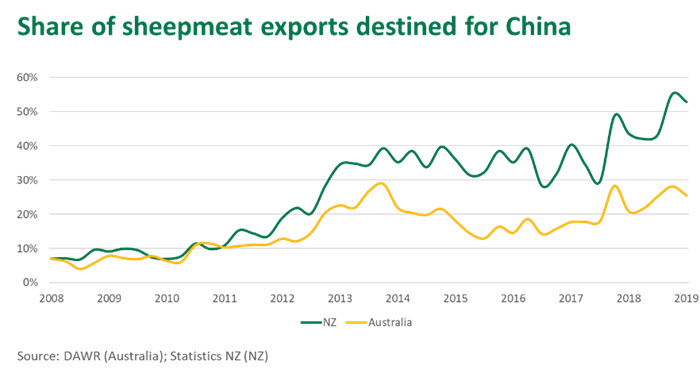02 May 2019
Combined, Australia and New Zealand pushed a record volume of lamb onto the export market in the first quarter. Despite the increase in supply pressure and poor seasonal conditions, prices in both countries have remained robust thanks to strong global demand.
Lamb exports from Australia’s principal competitor, New Zealand, recorded a strong start to the year. However, Beef + Lamb NZ estimated the 2018-19 lamb crop to decline slightly, to 23.7 million head, so high export levels may reflect dryer-than-normal conditions in New Zealand and fewer lambs being held back as replacements.
First quarter New Zealand lamb exports lifted 11% year-on-year and were 5% above the five-year average. Typically, New Zealand lamb exports peak in March but, depending on seasonal conditions, can remain elevated through to the end of May. Given the lift in exports in March, New Zealand lamb supply may have already peaked for the season.
Meanwhile, lamb-producing regions in Australia have continued to grapple with deteriorating feed conditions and water shortages, pushing increased lamb and sheep numbers through to slaughter. First quarter Australian lamb exports were up 19% year-on-year and were 27% above the five-year average.

Typical for this time of year, lamb prices have eased over the past six months. However, for both countries, the seasonal dip has been far less severe in 2019. The steady rise in lamb prices over the past six years, as highlighted below, is reflective of the emergence of China as a major buyer, growing demand in other premium markets and a weakening of both the Australian and New Zealand dollar.

China influence
The most significant transformation in export dynamics has come from China, purchasing record volumes of imported product in 2018. For New Zealand, China now represents half of total sheepmeat exports; for Australia, it is closer to a quarter. While both countries have greatly benefitted from China, the market remains sensitive to fluctuations in its domestic flock and ongoing trade tensions. A slowing economy could also pose a risk to future demand. Fortunately, Australia continues to have a diversified export portfolio of premium and secondary cuts markets.

Looking ahead, lamb supplies in New Zealand will continue to dry up until the new season commences in the last quarter of 2019. In Australia, much hinges on a decent autumn break in key sheep-producing regions. Solid Australian rainfall in autumn and winter could see strong pressure applied to prices as producers shift into rebuild phase and restockers battle it out for the limited supply of sheep and lambs. If useful rainfall fails to arrive over the next few months, Australian kills will remain elevated but, fortunately, additional New Zealand supply won’t be weighing the market down.


